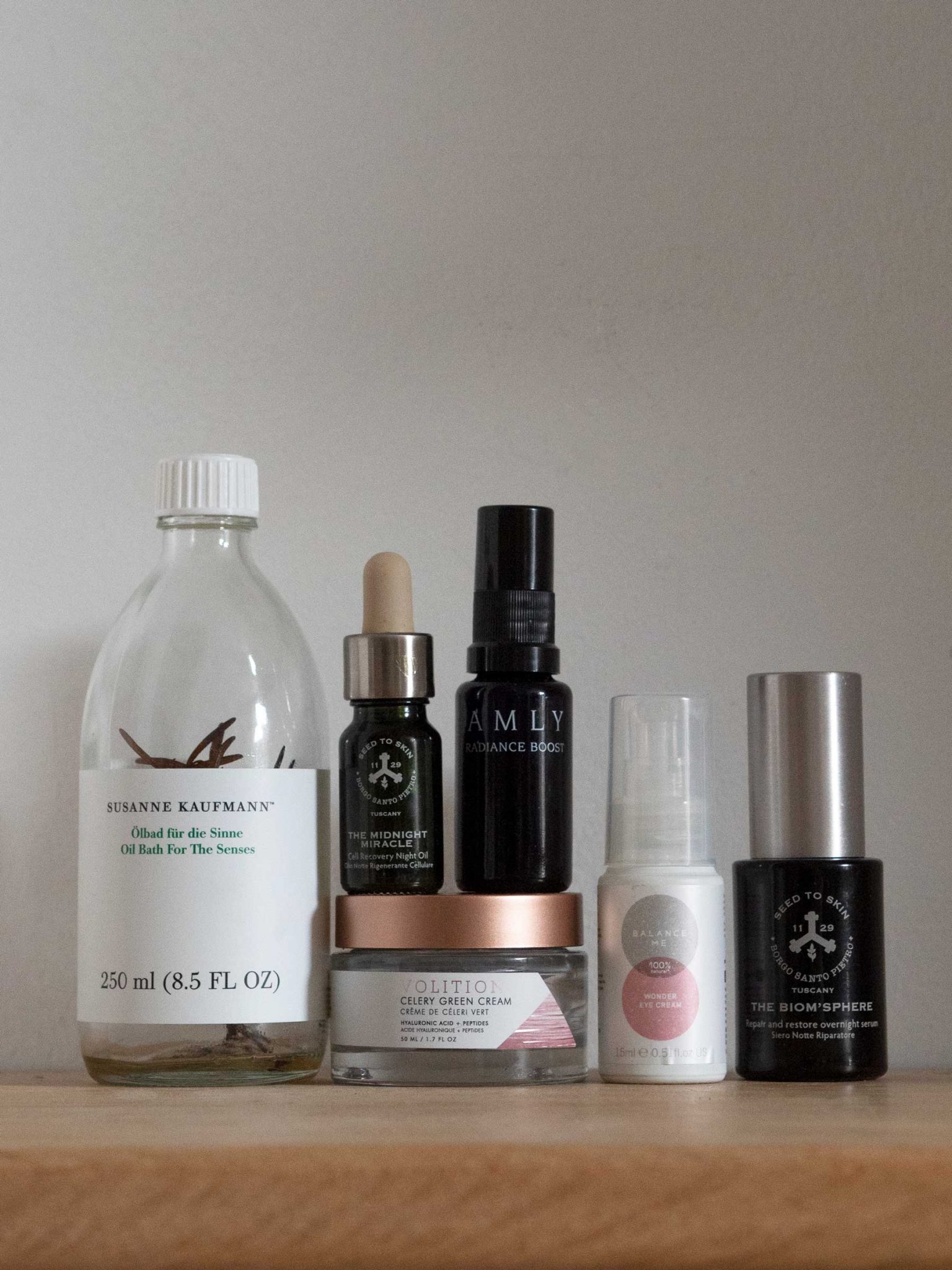I appreciate that lots of you are interested in finding out about the latest skincare products and whether they might be good for your skin. I’m lucky to be in a position in which I regularly try lots of different products. I avoid skincare products with known nasties, looking instead for those that are ethically and sustainably made, predominantly made with organic and/or natural ingredients. My approach is to use each product for at least a month before I share my experience here or on Instagram. After that initial trial period there are some that I continue to use every day or when appropriate, and others I give to friends and family. So, with that in mind, I thought it might be interesting for you to read about the products that are so good I’ve used every last drop, my latest empties. Below are the products I’ve just finished. They are all products I confidently recommend to friends and family, and feel confident recommending to you.
Balance Me Wonder Eye Cream
Even when I’m using another eye cream, I will almost certainly have a bottle of Balance Me Wonder Eye Cream* in my bathroom cabinet. It’s the one I rely on when my skin is feeling particularly sensitive. It contains a super fine low molecular weight hyaluronic acid, aloe vera and chamomile; meaning it’s great for dryness, puffiness, fine lines and sensitive skin. It’s also said to reduce dark circles thanks to witch hazel but I can’t speak from experience. The texture is more serum than cream, it spreads easily and is absorbed quickly. It’s great value and widely available.
AMLY Radiance Boost Face Mist
AMLY Radiance Boost Face Mist* didn’t last long in my bathroom, I found myself using it all the time – not just after cleansing but throughout the day to refresh my skin and give it a boost of moisture.
It is a light, refreshing mist that’s a bit of an all-rounder thanks to a great combination of ingredients. Among other things, it’s infused with the healing properties of silver, deeply moisturising hyaluronic acid and a probiotic lactobacillus ferment to feed the skin’s microbiome. I’m going to need a bigger bottle next time!
Seed to Skin The Midnight Miracle
Since researching face oils and their benefits for a previous post, I’ve made them a consistent part of my regimen, both morning and night. Seed to Skin The Midnight Miracle Cell Recovery Night Oil* is one of the most visibly efficacious face oils I’ve used. When I woke after the first night I used it I could see that my skin appeared more even in tone, and it felt more supple and nourished.
It contains vitamins A and E which increase skin turnover and cell regeneration. 70% of the oil comes from three types of rose seed, which give support to the cells in all three layers of the skin; the epidermis, dermis and hypodermis.
Volition Celery Green Cream
Volition Celery Green Cream* is more gel than cream. I first used it as a face cream, after applying my face oils but I quickly worked out that it was much more effective when used after my water-based serums and before face oils. It then became a bit of a game-changer, a serious moisture-booster.
The combination of celery seed extract and hyaluronic acid, along with cucumber and lavender extract makes for an incredibly refreshing, lightweight moisturiser; ideal for dry, sensitive skin.
Seed to Skin The Biom’Sphere
Another unbelievably good product from Seed to Skin, The Biom’Sphere* has been created to nourish the skin’s microbiome. It can become imbalanced due to frequent washing, pollution, preservatives from cosmetic products and strong sun irradiation; potentially causing the skin to become red, acne-prone, dry, excessively oily or itchy.
The Biom’Sphere contains pre-, pro- and post-biotics, black bee honey, pseudoalteromonas exopolysaccharides, hyaluronic acids of two different molecular weights and an oxygen complex.
Susanne Kaufmann Oil Bath For The Senses
There’s always a bottle of Susanne Kaufmann Oil Bath For The Senses by my bath. It’s my favourite bath oil when I need to slow down and relax. The soothing scents of ylang-ylang, patchouli and lavender fill the air as you pour it into the water, creating just the right atmosphere. It doesn’t leave an oily residue on the skin but does leave it feeling soft and nourished. There’s also the added benefit of rosemary which promotes blood circulation and boosts the skin’s metabolism. Sugarcane bagasse and corncob hydrate the skin.
I plan to make ‘The Last Drop’ a regular feature on Style&Minimalism. Please let me know via email or an Instagram DM if you found this article useful or if you have any questions about the latest empties I’ve featured.
